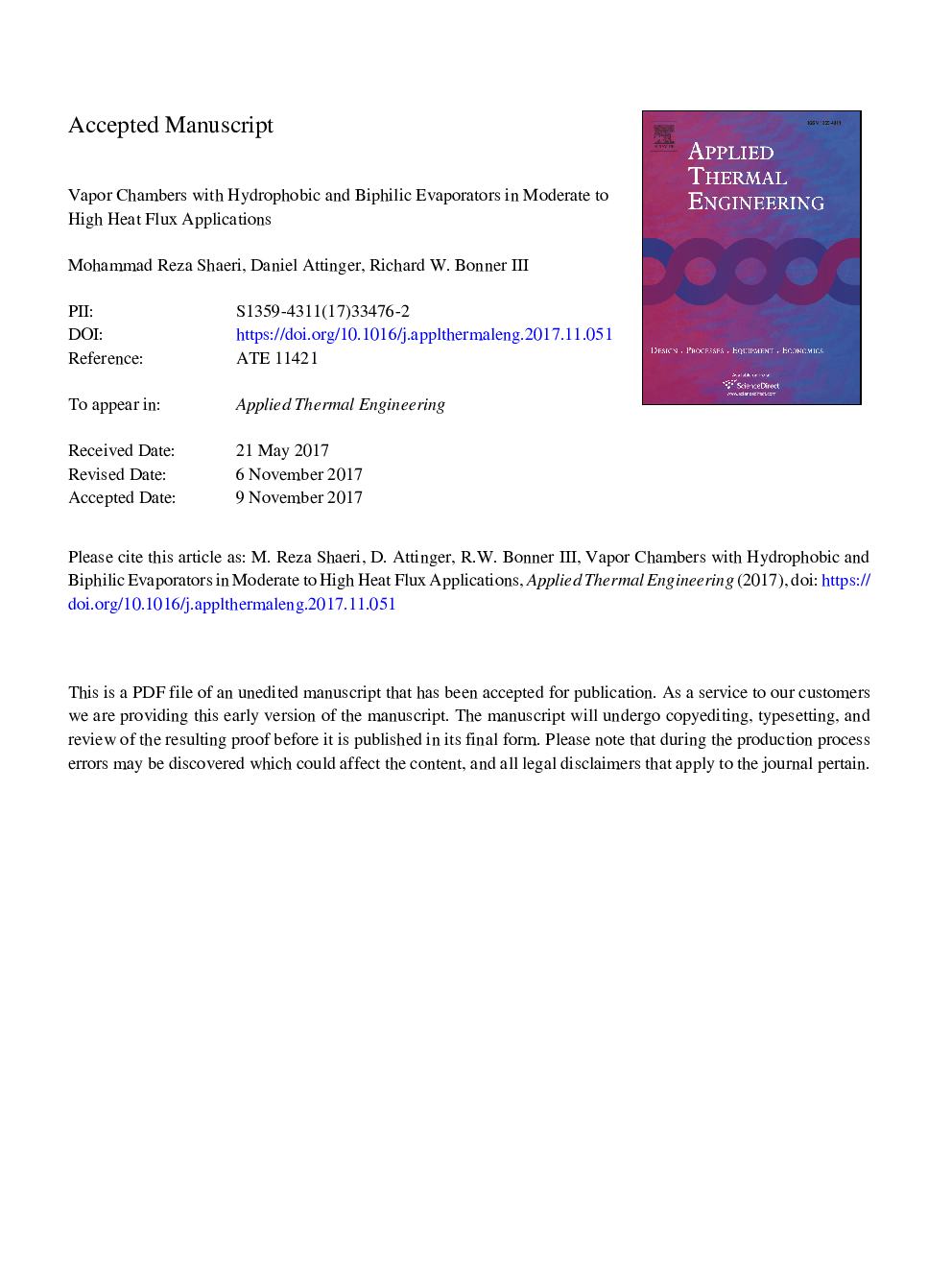| Article ID | Journal | Published Year | Pages | File Type |
|---|---|---|---|---|
| 7046330 | Applied Thermal Engineering | 2018 | 38 Pages |
Abstract
Two new types of vapor chambers were fabricated to investigate the influence of engineering the wettability of evaporators for possibility of simultaneously reducing the thermal resistances and increasing the critical heat flux (CHF). One vapor chamber was fabricated by pressing a hydrophilic screen mesh wick structure into a hydrophobic evaporator through support posts integral to the condenser portion of the vapor chamber. The second vapor chamber included a biphilic evaporator without an evaporator wick, as such, the superhydrophilic zone surrounding the central hydrophobic area directly above the heater provided the capillary forces. Despite their lower thermal performances compared with those of the baseline vapor chamber fabricated by sintering the hydrophilic copper particles onto a hydrophilic copper substrate, both novel vapor chambers exhibited promising performances, as such, the vapor chamber with a hydrophobic evaporator approached CHF at high heat fluxes around 105â¯W/cm2, and the one with a biphilic evaporator did not approach the incipience of CHF until 162â¯W/cm2. The mechanical contact between the screen mesh and the hydrophobic evaporator, and the patterning of the biphilic evaporator were identified as the key roles in thermal performances of the tested vapor chambers. Suggestions are given to improve the thermal performances of the proposed vapor chambers in this study. If successful, the fabrication cost of these vapor chambers will be reduced by skipping high-temperature sintering process on the evaporators, the method that is used to fabricate the commonly used sintered-powder vapor chambers.
Related Topics
Physical Sciences and Engineering
Chemical Engineering
Fluid Flow and Transfer Processes
Authors
Mohammad Reza Shaeri, Daniel Attinger, Richard W. III,
